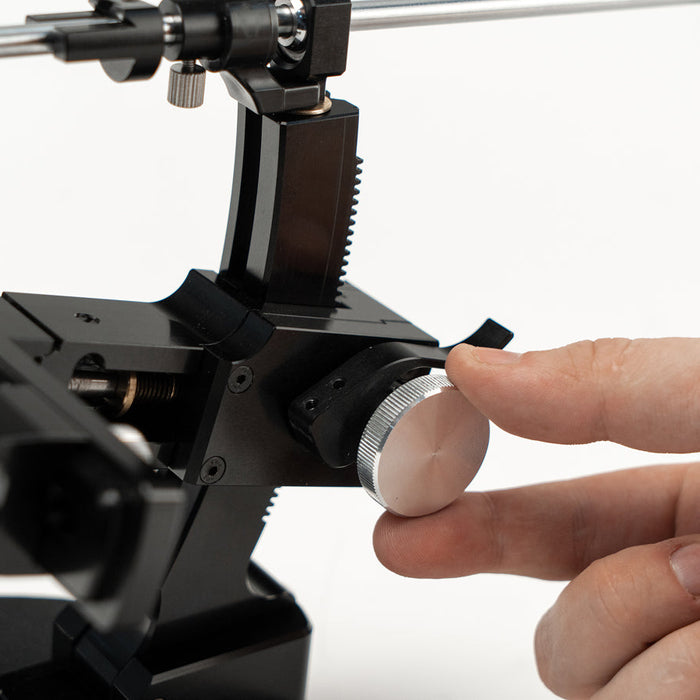
Italian stilettos are one of the few modern knives that trace their continuous history back to the Middle Ages. Оn the example of these knives that we can trace the process of evolution of the European knife tradition over several centuries. Stiletto (ital. stiletto from lat. stilus — "writing stick", "sharp rod") - was originally an Italian dagger with a straight cross, a narrow and thin blade. The blade could be sharpened, but in some versions did not have a cutting edge. The cross-section of the blade could be not only flat, like a traditional dagger, but also round, oval, three, and four-beveled. The stiletto directly descended from the so-called "dagger of mercy", used by knights on the battlefields in the XII century. It was designed to penetrate the vulnerable points of the knight's armor and defeat the dismounted knight. The length of such a dagger was about 30 cm. In the XVI century, it was used in duels, as a weapon to intercept the enemy's blade, as a means of defense. For this reason, a more developed guard appeared on the dagger.

Around the turn of the XVII century, the Genoese knife appeared in Genoa, which became widespread among all segments of the population. It marked the transition of the stiletto from a military weapon to the status of a general-use knife. The handle of the Genoese knife usually had no guard and was slightly asymmetrical in shape compared to the blade. It could be made of olive wood, sage, laurel, and the most expensive specimens of ivory. The blade of the Genoese knife had bevels from the spine or concave bevels with a powerful false blade. There was even a variant with an awl-shaped blade hidden in the main blade for stabbing. The main blade of such a knife was screwed to the handle and could be removed at any time, turning a completely peaceful knife into a penetrating weapon.


In the late XVIII – early XIX centuries, folding knives began to spread in Italy. Each Italian region had its own types of blades, different locks, and different handle shapes. A number of blades of these knives directly borrowed geometry from stilettos. These include knives such as:
"Piemontese"
A dueling knife, common in the late 18th century. When opened, it reached a length of 70 cm and had a special protrusion on the back of the handle. The handle was made of various materials: bone, horn, wood, etc.

"Ravennate"
"Resident of Ravenna" - a variant of the dueling stiletto with a long blade and a straight handle. It was made in Ravenna.

"Romano" - roman dueling knife, with a total length of up to 45 cm and a blade lock.

In the XX century in Italy, automatic folding knives appeared and began to be mass-produced. The first of these knives is considered a knife "Prioletta" from Sardinia. The knife is large, with a blade length of 36 cm and a push-button opening system. The blade could have both a dagger geometry with and without a false edge. The steel on the blade is the simplest-carbon or AISI 420 with a hardness of no more than 57 HRC.

The Maniago knife, known for numerous mafia films, was produced in the city of Maniago, 100 kilometers from Venice. Knife production there has been known since the XIV century. Automatic knives have been produced there for more than 100 years. To date, the most popular manufacturer from Maniago is the master Frank Beltram. Traditionally, these knives use several types of the blade locking mechanisms. Among them is a pick-lock in which the locking is performed by means of a spring and a locking button. The stiletto opens with a button located in the center of the handle and closes when you move the metal plate that holds the blade. In such a lock, there is always a safety lock that protects against accidental opening of the knife.

Another common lock is the lever-lock. This is a flag-type lock, in which the blade is locked with a pin on a flat spring. The advantage of lever-lock over other automatic knives is the easy (without tools) replacement of springs. The lock mechanism functions by operating a pin on a flat spring, which is actuated by a lever. When pressing on the lever, a spring is released, which pushes the blade out of the groove of the handle. After a full turn of the folding mechanism axis, the pin enters the groove on the heel with the front part, fixing the blade. The lever-lock design protects against the spontaneous opening. Only when the lever is firmly pressed, the folding mechanism is triggered. The most popular knife of this type is the Leverletto knife developed in 2007.

Unlike their predecessors, modern automatic Italian stilettos already fit freely in the pocket, they have a short blade of 8-10 cm, but at the same time quite authentic handles made of horn or wood.
Italian stiletto knives have come a long way from a melee weapon to a completely peaceful accessory. But nevertheless, they did not gain wide popularity outside of Italy. This is due to the lack of such a knife of universal use. A stiletto-type blade, due to its dagger or semi-dagger shape, cannot compete with conventional flat blades in working on products or wood. Such a blade cuts hard vegetables and fruits due to the thick blade and the protruding rib in the center. In addition, in many countries, there is a ban on switchblades, which does not allow you to carry them with you. Nevertheless, the Italian stiletto has become a legendary weapon of the past and a symbol of the original centuries-old Italian knife culture.














